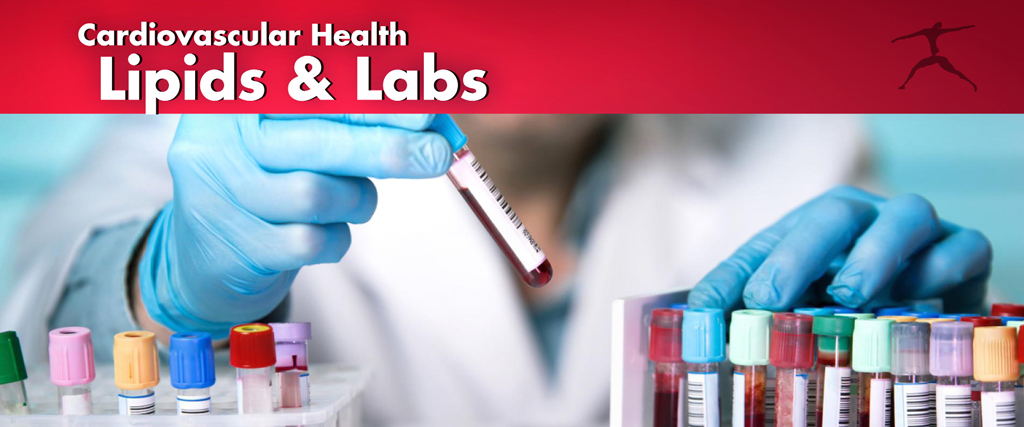
With American Heart Month well underway, there’s no better time to become more informed about heart disease – the number 1 cause of death in America and worldwide. Unfortunately, there remains a great deal of misunderstanding among the general public regarding heart disease, due in part to the limited scope of information portrayed in the mainstream, as well as the lack of alternative perspectives expressed among professionals regarding treatment options and risk assessment. As a foundation, it would help to first clarify exactly what is meant by heart disease.
Cardiovascular vs Heart Disease
Heart disease is a term that refers specifically to issues and deformities in the heart itself, whereas cardiovascular disease describes complications with the blood vessels and circulatory system as well as the heart. Forms of heart disease include congestive heart failure, hypertrophic cardiomyopathy, congenital heart disease, atrial fibrillation, dilated cardiomyopathy, mitral regurgitation, pulmonary stenosis, and coronary artery disease (CAD) among others. Aside from congenital heart issues, several conditions classified as heart disease often stem from many of the same essential risk factors, like uncontrolled hypertension. As such, it may be reasonable to adopt a number of general nutritional and lifestyle practices that facilitate the long-term health of the heart, while also improving treatment outcomes among patients with a specific diagnosis of heart disease.
Roughly half (47%) of all Americans
have at least 1 of 3 key risk factors for heart disease:
high blood pressure, high cholesterol, and smoking
Risk Factors
According to the Centers for Disease Control and Prevention (CDC), roughly half (47%) of all Americans have at least 1 of 3 key risk factors for heart disease: high blood pressure, high cholesterol, and smoking. While smoking remains the most manageable risk factor, such that quitting is largely dependent upon behavior modification, achieving healthy cholesterol levels and blood pressure can be more of a challenge given their broad spectrum of influence involving behavioral, psychosocial, dietary, metabolic, and genetic factors among others. There is no question that genetics exert a significant influence on serum cholesterol levels and blood pressure, yet aside from rare exceptions, mindful nutrition and healthful lifestyle practices are capable of normalizing unhealthy measures in most individuals.
Dietary Considerations

Unfortunately, adhering to a healthful diet is not as straight-forward as many self-proclaimed dieting authorities and other classically trained health professionals would like the public to believe. Diet is not simply a matter of calories-in calories-out for the purpose of weight-loss. Rather, diet should be customized to every individual to facilitate the most robust expression of health, and without attachment to unrealistic or rapid weight-loss goals.
Just as no two people are perfectly identical, no single diet will affect every person to the same degree. That said, there remain a number of core dietary principles and eating patterns that have repeatedly shown to associate with favorable health outcomes specific to heart disease, especially in relation to unhealthy cholesterol and blood pressure measures.
Physical Activity

In terms of adopting an individualized approach, the same can be made of exercise prescriptions. However, in the absence of major disability or disease, most would be well-served to follow the general recommendations supported by various reputable health organizations, particularly if one’s goal is concerned primarily with reducing essential risk factors like serum cholesterol and blood pressure.
According to the Physical Activity Guidelines for Americans (PAG) (2018), most individuals would benefit from the following key guidelines:
- Move More, Sit Less
Adults should move more and sit less throughout the day. Some physical activity is better than none. Adults who sit less and do any amount of moderate-to-vigorous physical activity gain some health benefits. - Minimum Weekly Aerobic Activity
Preferably, aerobic activity should be spread throughout the week.
For substantial health benefits, adults should do at least:- 2½ – 5 hours (150 – 300 minutes) a week of moderate-intensity, OR
- 1¼ – 2½ hours (75 – 150 minutes) a week of vigorous-intensity aerobic physical activity, OR
- an equivalent combination of moderate + vigorous aerobic activity
- More Aerobic Activity
Additional health benefits are gained by engaging in physical activity beyond the equivalent of 5 hours (300 minutes) of moderate-intensity physical activity a week. - Muscle-Strengthening Activities
Adults should also do muscle-strengthening activities of moderate or greater intensity, and that involve all major muscle groups on ≥2 days a week, as these activities provide additional health benefits.
Diet and exercise remain two of the most fundamental considerations for improving heart health and reducing the likelihood of death from all causes. While not the focus of the current discussion, these topics will be explored in much in greater detail in subsequent posts to support more specific evidence-based recommendations. For now, determining one’s risk remains a key point of focus.
Blood Pressure & Cholesterol
As previously identified, heart disease can manifest as distinct pathologies, while sharing common underlying imbalances that promote disease progression. Elevated serum cholesterol and blood pressure remain two of the most important considerations for reducing the likelihood of heart disease, for which coronary artery disease (CAD) is the most common type.
Also known as ischemic heart disease, CAD is caused by plaque buildup in the walls of the arteries (called coronary arteries) that supply blood to the heart. This gradual buildup of plaque, consisting of oxidized cholesterol, fats, calcium, fibrin, and cellular waste products, leads to a narrowing of the coronary arteries, a process known as atherosclerosis, that progresses over time and can eventually lead to full occlusion.
Coronary atherosclerosis begins as early as childhood, with the overwhelming majority of adults over 30 showing evidence of established plaque deposits. Alarmingly, for most adults with established CAD the first sign of disease is a heart attack. This occurs as a result of plaque rupture, whereby the lipid-rich contents sealed within the inner lining of the arterial walls by a protective fibromuscular cap (consisting of collagens, elastin, smooth muscle cells, and proteoglycans) becomes degraded and fails to prevent the lipid contents of the atheroma (plaque) from seeping into the blood stream. The result is a blood clot that starves the heart of its oxygen supply. This is how most heart attacks occur, and it is the reason why a heart attack is sudden without warning and often fatal.
when both blood pressure and endothelial inflammation are elevated…
the stage is set for rupture and heart attack
The increased tendency of arterial plaque rupture and blood clot is known as the prothrombotic state, which is characterized by the presence of low-grade systemic inflammation. It is important to understand that the existence of established plaques within arterial walls pose little immediate danger in the absence of inflammation and elevated blood pressure. However, when both blood pressure and endothelial inflammation are elevated, the protective fibromuscular cap that shields an atheroma from rupture wears thin from tissue-degrading chemical factors (inflammation) and sheer force (increased blood pressure), the stage is set for rupture and heart attack.
CRP & Screening for Heart Disease
Regular assessment of serum lipid measures specifically low-density lipoprotein (LDL-C), high-density lipoprotein (HDL-C), triglycerides, and total cholesterol are well-established predictors of heart disease risk, especially when combined with additional assessments like blood pressure and other common metabolic markers (including blood glucose). However, these measures fail to accurately depict the presence of a prothrombotic state, which is better represented by specific measures of inflammation like C-reactive protein.
C-reactive protein (CRP) is an acute-phase protein that is synthesized during an inflammatory response. Aside from measures of serum lipids and blood pressure, several studies have found an elevated CRP level to be an independent risk factor for cardiovascular disease. Other select studies have shown greater predictive value of CRP over LDL-C for determining future cardiovascular events. Considering this information, it would be prudent to request the addition of CRP to other standard diagnostics when screening for heart disease and other facets of cardiovascular risk. Please discuss this information with your licensed physician.
References
1. Cheruvu P. K., Finn, A. V., Gardner, C., et al. (2007). Frequency and distribution of thin-cap fibroatheroma and ruptured plaques in human coronary arteries: a pathologic study. Journal of the American College of Cardiology, 50(10):940-9.
2. Hong, Y. M. (2010). Atherosclerotic cardiovascular disease beginning in childhood. Korean circulation journal, 40(1), 1–9.
3. Ridker, P. M., Rifai, N., Rose, L., et al. (2002). Comparison of C-reactive protein and low-density lipoprotein cholesterol levels in the prediction of first cardiovascular events. New England Journal of Medicine, 347:1557–1565.
4. Ridker, P. M., Danielson E, Fonseca, F. A. H., et al. (2009). Reduction in C-reactive protein and LDL cholesterol and cardiovascular event rates after initiation of rosuvastatin: a prospective study of the JUPITER trial. Lancet, 373:1175–1182.
5. U.S. Department of Health and Human Services. (2018) Physical Activity Guidelines for Americans. 2nd ed. Washington, DC: U.S. Department of Health and Human Services.



